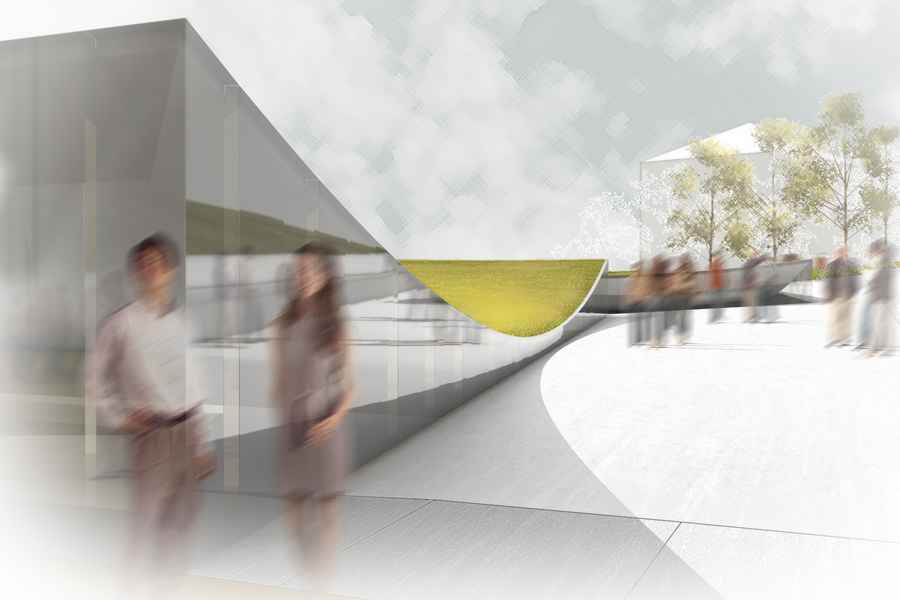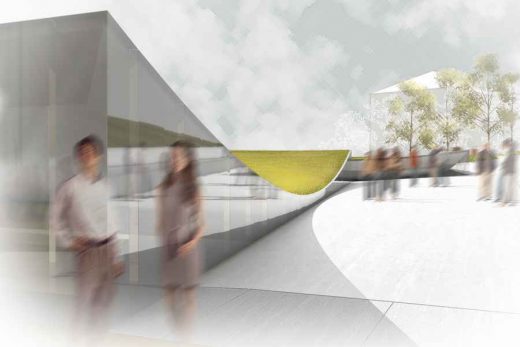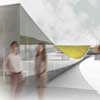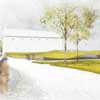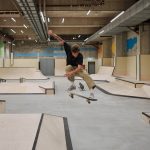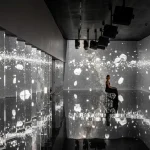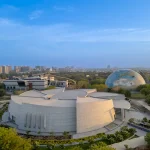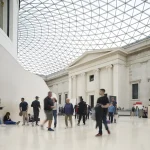Ptuj Building Design, Archaeological Museum Slovenia, Project News, Images
Ptuj Archaeological Museum
Contemporary Slovenia Building Development design by Enota in Slovenia
6 Dec 2011
2011-
Design: Enota Architects
Ptuj Archaeological Museum Building
The site of what is today the town of Ptuj has been settled since prehistory. The architectural heritage from the later Roman period is particularly rich with the extent of settlement in those times having been surpassed only recently.
After the fall of Rome, the town’s development exhibits a slowdown but sustains until the present day and results in an abundance of archaeological findings. On the one hand, this means an incredibly rich archaeological collection and vivid archaeological activity, but also problems with any construction or infrastructural intervention done below ground level.
The mediaeval Ptuj stretches between the monastery of the Conventual Franciscans in the east, the castle in the north, and the Dominican monastery in the west. Today, the edge of the old town is preserved in the south by the Drava river and in the north, where the castle hill is not built, while in the east, it gets lost in the later development.
On the eastern side, this border, logically represented in nature by the course of the mediaeval city walls, is almost completely lined with a belt of greenery, which represents a welcome caesura between the historical town and the contemporary development. The green belt is interrupted only on the site of the planned museum of archaeology, by the only main access road into the town from the northwestern side.
The new building is designed so as to fill the gap in the natural edge of the town and recreate the green belt along the entire northern edge of the town. The establishment of the contiguous green belt articulates the transition from the old town core by creating a clear divide between the historical and the later urban structure.
The building of the museum of archaeology is placed on the very edge of the former mediaeval city walls and is dug in as much as the conditions permit it. This way, a view of the renovated complex of the Dominican monastery opens over the new building from the north side, allowing the monastery to re-assume its role as the city’s dominant. The recreation of the monastery’s north courtyard with its original outline further returns the monastery to its former spatial boundaries.
Excavating for new constructions is problematic in the entire area of the Roman city since there is a great likelihood of archaeological findings from the period. Due to the necessary field work, the construction may be significantly delayed or, in the case of important findings, even permanently halted. Paradoxically, the archaeologists are the most vocal opponents of discovering new findings due to the backlog of already excavated material. A building’s underground levels may therefore be planned only in sections where the archaeological layers are already destroyed due to previous interventions.
The excavation on the site of the erstwhile moat is not problematic since the moat’s embankment contains no archaeological findings that could otherwise be expected. The rest of the site features three cellared buildings, each having had a large foundation pit dug for their construction, while in the space between the buildings, there is shallow sewage infrastructure.
All these factors determine the depth of unproblematic excavation that, in turn, determines the depth of the floor of the new building, which is designed to accommodate the new state of affairs after the archaeological field work has finished. Since the floor level of the new exhibition site adapts to the depth of the expected findings, these may be exhibited “in situ”, which can, together with the restored remains of the city walls, further add to the exhibits of the new museum.
In order to recreate the town’s green belt, the roof is fully greened. Since the growth on such roofs – as opposed to terrain containing vegetation – is relatively low, the roof surface is raised along the edges in several places. By the monastery, the edges rise to the height of the erstwhile walls, thus establishing historical relations in the space. The organic, bowl-shaped roof allows the green surface to be seen from all directions and renders it comparable with the rest of the green surfaces.
Though the “slit” between the surrounding terrain and the edge of the “floating green roof”, the passers-by enjoy a direct view of the archaeological collection while the interior is supplied with natural clerestory lighting. Designed in such manner, the museum building is surprisingly reminiscent of the archetypal archaeological site where the excavation is protected from the sun and precipitation with a simple tarpaulin roof on an improvised construction.
Ptuj Archaeological Museum – Building Information
Project: Ptuj Archaeological Museum
Type: commission
Year: 2011
Status: in progress
Size: 6.720 sqm
Client: Municipality of Ptuj
Location: Ptuj, Slovenia
Architecture: Enota
Project team: Dean Lah, Milan Tomac, Alja Černe, Nebojša Vertovšek, Andrej Oblak, Polona Ruparčič, Karmen Bovha, Maruša Zupančič, Nuša Završnik Šilec
Ptuj Archaeological Museum images / information from Enota
Location: Ptuj, Slovenia, southeast Europe
Architecture in Slovenia
Slovenia Architecture Designs – chronological list
Another Slovenian building designed by enota on e-architect:
Wellness Orhidelia, Podčetrtek
enota
Wellness Orhidelia
A recent Slovenian building design by enota on e-architect:
Pegan Petkovšek National Gymnastics Centre, Ljubljana
Pegan Petkovšek Slovenia
Slovenian Architecture – Selection
Izola Housing
Ofis Arhitekti
Izola Housing
Celje Market
Arhitektura Krušec
Celje Market
Slovene Ethnographic Museum, Ljubljana
Groleger Arhitekti
Slovene Ethnographic Museum
Apartment House Gradaška, Ljubljana
Sadar Vuga Arhitekti
Slovenian building
Comments / photos for the Ptuj Archaeological Museum Slovenia page welcome

